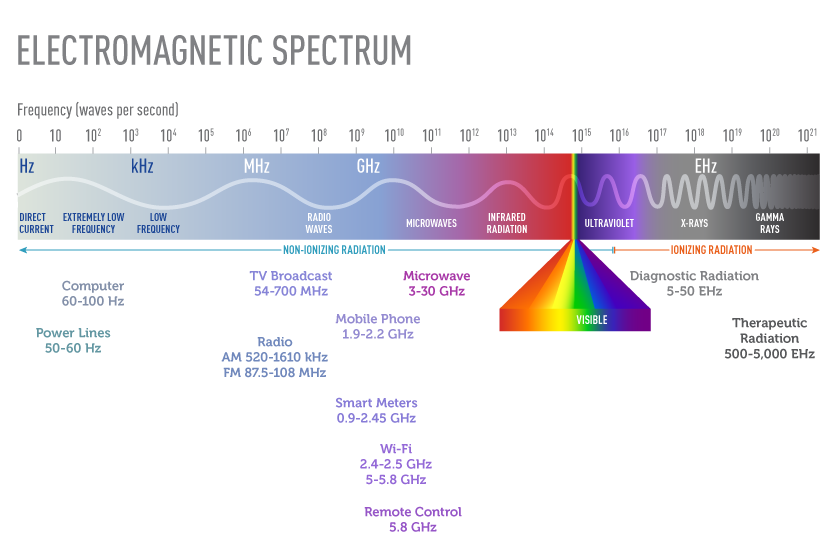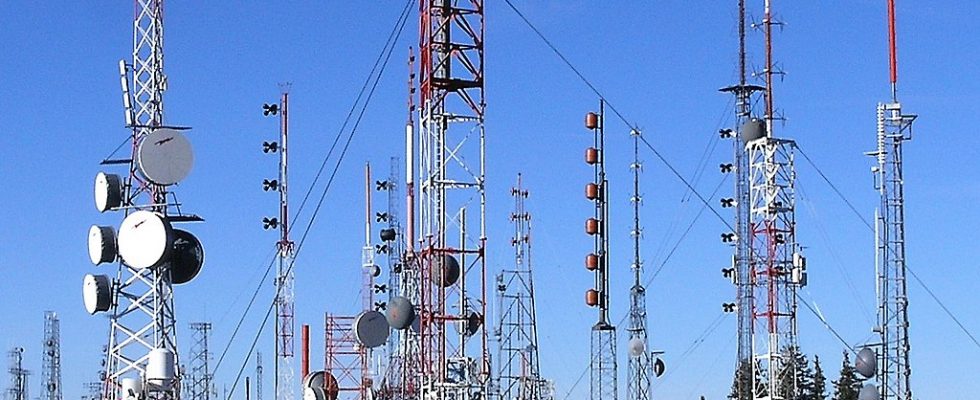The word radiation refers to any source that emits energy. This can include televisions, the sun, and the human body. Some sources of radiation, such as x-rays and gamma rays, can damage DNA and cause cancer. So how does Radiofrequency (RF) radiation affect people?
Are Radio Frequencies Dangerous?
According to the American Cancer Society, “Radiation waves do not have enough energy to damage DNA directly,” so it is not known how they would be able to cause cancer. There have been some studies done, but nothing conclusive has been found. There is concern that some forms on non-ionizing radiation, such as RF radiation, might have other effects on cells that could lead to cancer.
It is important to note that if a human body absorbs substantial amounts of RF radiation, there can be burns and tissue damage from too much heat.
Natural and Man-Made Sources of RF Radiation
Some Natural Sources of RF
- Outer space and the sun
- The sky
- Lightening strikes
- The earth – a tiny proportion of radiation from the earth is RF (most is infared)
Some Man-made Sources of RF
- Radio and Television Signals
- Cell Phone Signals
- Radar
- The heating of body tissues to destroy them in medical procedures
- Wifi, Bluetooth® Devices
- “Welding” pieces of polyvinyl chloride (PVC) using certain machines
- Milimeter Wave Scanners (used for security screening)

Radio Frequencies on the Electromagnetic Spectrum
Radio (RF) Frequencies are found on the low-energy end of the electromagnetic spectrum. Most people are exposed to the low levels of RF radiation everyday. The signals that surround us include radio broadcasts, wifi, and cell phone towers.
Some people, like those who maintain antenna towers as part of thier jobs, are exposed to a higher amount of RF radiation. People who use radar equipment are also at higher risk for exposure.
FCC Rules on RF Safety
The Federal Communications Commission (FCC) requires broadcasters to display appropriate signage on transmitter sites. These signs keep the public and trained workers informed of RF emissions. The signs fall into different categories depending on the level of exposure.
From TechCaliber.com:
- Category 1: Locations where RF energy is not in excess of the general population limit. Signage is not required but if used must show a green “INFORMATION” heading.
- Category 2: Locations where the continuous exposure limit for the general population is exceeded but not for RF-trained personnel. These locations must have positive access controls and signs with the word “NOTICE” in blue color.
- Category 3: Locations where the exposure limit for occupational (RF-trained) personnel would be exceeded by no more than a factor of ten. The FCC will require signs with the word “CAUTION” in yellow color, and controls or indicators (chains, railings, contrasting paint, diagrams, etc.) in addition to positive access control.
- Category 4: Locations where the exposure limit for RF-trained personnel would be exceeded by more than a factor of ten or where there is a possibility for serious contact injury. “WARNING” signs in orange color are required, and “DANGER” signs in red color are required where immediate and serious injury will occur on contact, in addition to positive access control.
Here are some resources for broadcasters who are interested in more information on proper signage.

